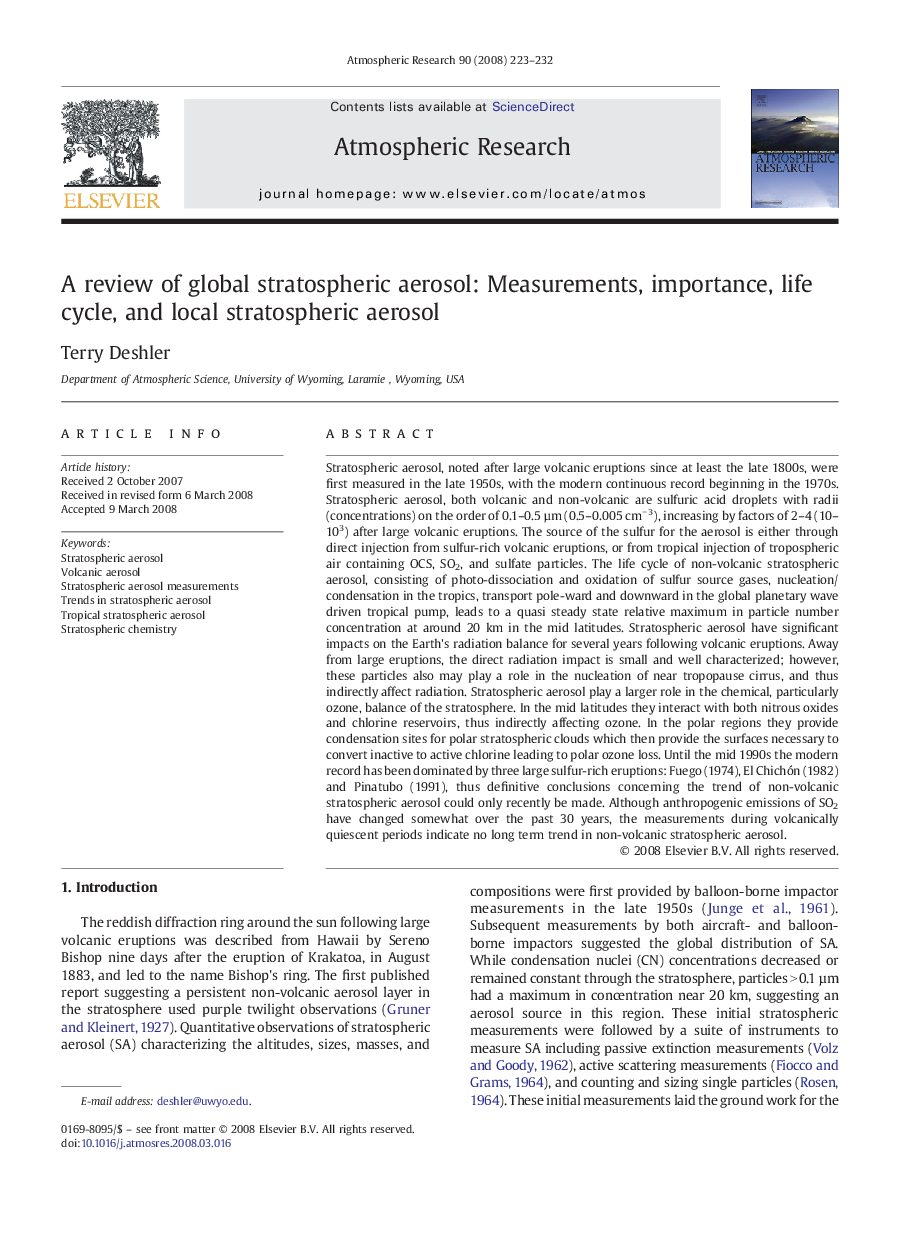| کد مقاله | کد نشریه | سال انتشار | مقاله انگلیسی | نسخه تمام متن |
|---|---|---|---|---|
| 4451093 | 1620571 | 2008 | 10 صفحه PDF | دانلود رایگان |

Stratospheric aerosol, noted after large volcanic eruptions since at least the late 1800s, were first measured in the late 1950s, with the modern continuous record beginning in the 1970s. Stratospheric aerosol, both volcanic and non-volcanic are sulfuric acid droplets with radii (concentrations) on the order of 0.1–0.5 µm (0.5–0.005 cm− 3), increasing by factors of 2–4 (10–103) after large volcanic eruptions. The source of the sulfur for the aerosol is either through direct injection from sulfur-rich volcanic eruptions, or from tropical injection of tropospheric air containing OCS, SO2, and sulfate particles. The life cycle of non-volcanic stratospheric aerosol, consisting of photo-dissociation and oxidation of sulfur source gases, nucleation/condensation in the tropics, transport pole-ward and downward in the global planetary wave driven tropical pump, leads to a quasi steady state relative maximum in particle number concentration at around 20 km in the mid latitudes. Stratospheric aerosol have significant impacts on the Earth's radiation balance for several years following volcanic eruptions. Away from large eruptions, the direct radiation impact is small and well characterized; however, these particles also may play a role in the nucleation of near tropopause cirrus, and thus indirectly affect radiation. Stratospheric aerosol play a larger role in the chemical, particularly ozone, balance of the stratosphere. In the mid latitudes they interact with both nitrous oxides and chlorine reservoirs, thus indirectly affecting ozone. In the polar regions they provide condensation sites for polar stratospheric clouds which then provide the surfaces necessary to convert inactive to active chlorine leading to polar ozone loss. Until the mid 1990s the modern record has been dominated by three large sulfur-rich eruptions: Fuego (1974), El Chichón (1982) and Pinatubo (1991), thus definitive conclusions concerning the trend of non-volcanic stratospheric aerosol could only recently be made. Although anthropogenic emissions of SO2 have changed somewhat over the past 30 years, the measurements during volcanically quiescent periods indicate no long term trend in non-volcanic stratospheric aerosol.
Journal: Atmospheric Research - Volume 90, Issues 2–4, November–December 2008, Pages 223–232